Japan. Exotic, futuristic, traditional. It’s on everyone’s bucket list, because it has so much to offer. The main question is, when is the best time to go to Japan? We outline each season for you, and what you can do to make the most of your trip during that time!
When is the Best Time to Visit Japan?
Which season has the best weather? What festivals are the most interesting? What kinds of food are eaten each season? These are all great queries. And the answers? Anytime is the best time. All four seasons in Japan have their pros and cons. Spring is green and warming up, so it’s not uncomfortable and there’s lots to do. Summer is hot and muggy, but the festivals and fireworks are amazing. Fall, with the beautiful tree leaves in various shades of yellow and orange is a magical time to be in the country, and winter is cold and snowy, but the skiing and bathing in hot tubs makes it all worthwhile!
To help you plan your trip to Japan, we’ve asked travel bloggers to add to our two cents, and now there is this list of all the fantastic things to do in this amazing country all year long. Let’s get to it!
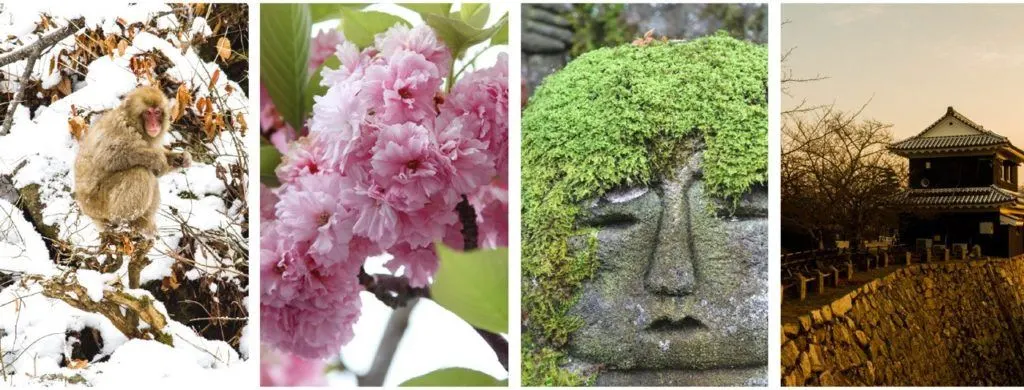
by Anne at Japan Travel Planning
Autumn in Japan
As the hot weather begins to fade, once again Japan is blessed with mild weather that lasts well into November each year. The only minor inconvenience (sarcasm intended) is that it can also be typhoon season. Japan is surrounded by water, and typhoons occur rather frequently, but only about twice a year are there large typhoons that may disrupt your travel.
I have been through many typhoons, and it is important to be away from the coast, on higher ground, while you ride out the storm. Even with the threat of a typhoon or two, during the four months of fall, Japan during autumn is my absolute favorite. Japan is full of gorgeous, well-maintained trees, and the fall colors are spectacular. There are plenty of places to go to really enjoy the foliage and the love of being outdoors.
This is a popular activity and the Japanese have a special word for it, “koyo.” Some of the best places to see gorgeous fall foliage is the parks in Tokyo, Kyoto, the Mt. Fuji area, and of course the Japanese Alps to name a few. You really can’t go wrong traveling during autumn, the weather is just about perfect everywhere so you can be outside or inside, you can hike, climb, explore up and down mountains and gorges, enjoying being outdoors again.
Some of our favorite places to go in fall, other than the ones listed below, are Hakone, Hokkaido, any city in northern Honshu, Nara, Nikko, and so much more.
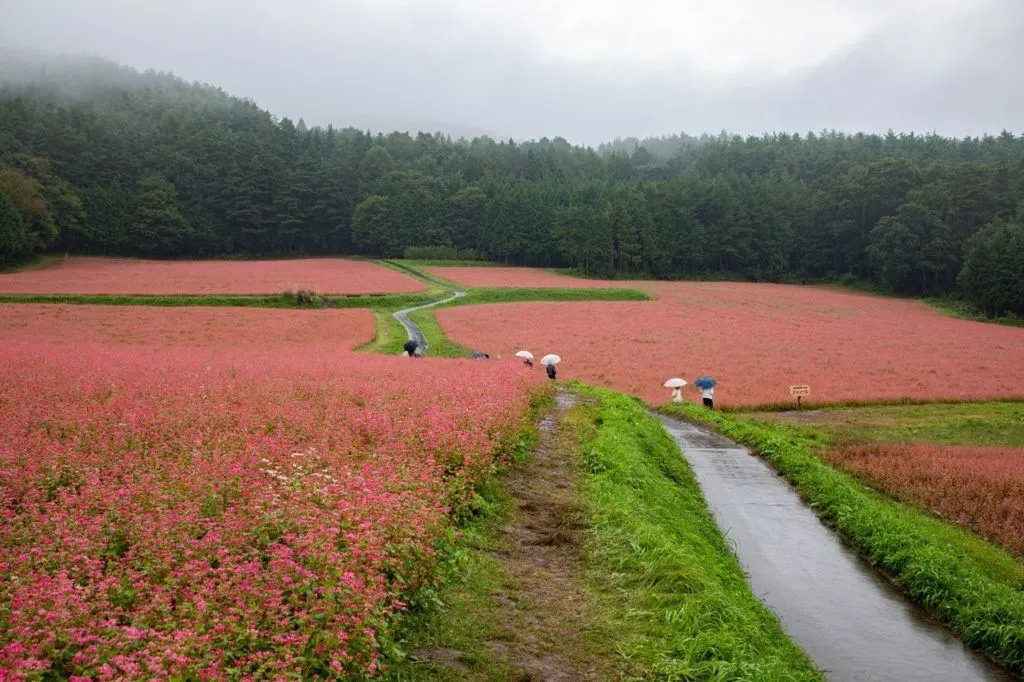
The Red Buckwheat Bloom and Soba Festival (near Matsumoto)
One of the prettiest, but smallest festivals we’ve been to was in the small city of Minowa, in Nagano Prefecture. It celebrates soba like no other place in Japan. They have the unusual red buckwheat plants, as well as the more common white color.
In the fall, around mid to late September, the red buckwheat blooms and the fields are a stunning fuchsia color. People from all around come to photograph the flower fields during the bloom. On one of the weekends, the town puts on a soba festival, where the end product of the buckwheat is highlighted.
There are local town folk making traditional soba noodles by hand, the cooks have set up huge pots outside the town hall along the building, and of course you can eat as much soba as you can handle. We couldn’t discern a difference between the noodles made with the red buckwheat versus the white, but it didn’t matter. It was all fantastic.
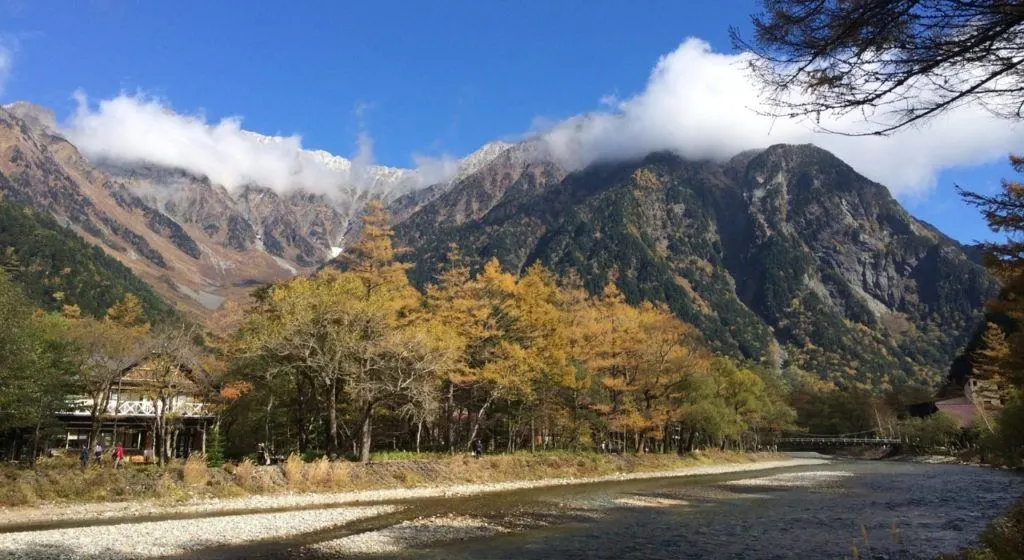
Hiking Kamikochi (near Matsumoto)
Hiking Kamikochi in the autumn is a super way to see the myriad of fall colors in Japan. Located not far from the city of Matsumoto, Kamikochi National Park is in the Japanese Alps. The park itself is free to enter, although if you are using public transport to get here, the combination train and bus will cost around US$30 for the return trip from Matsumoto.
You’ll find extensive trails here and the English speaking staff at the visitor centre will help you to get the most from your stay. Virtually all the trails are easy to hike, with excellent signposting. You’ll find something to suit your abilities no matter what they are. You can even connect several of the trails that will have you hiking for 5-6 hours without backtracking and enjoying all the different views of the valley.
There’s a river that runs through the centre of the valley, and well-made bridges that cross it safely. You’ll also find lovely hotels here, several cafes and restaurants too. The fall colors are simply superb, with wide-ranging vistas and a variety of different trees offering a full spectrum of autumnal shade. Even if you don’t wish to hike, seeing the fall colors is also possible from the visitor centre, or indeed the bus ride on the way to the park.
by Sarah at ASocialNomad
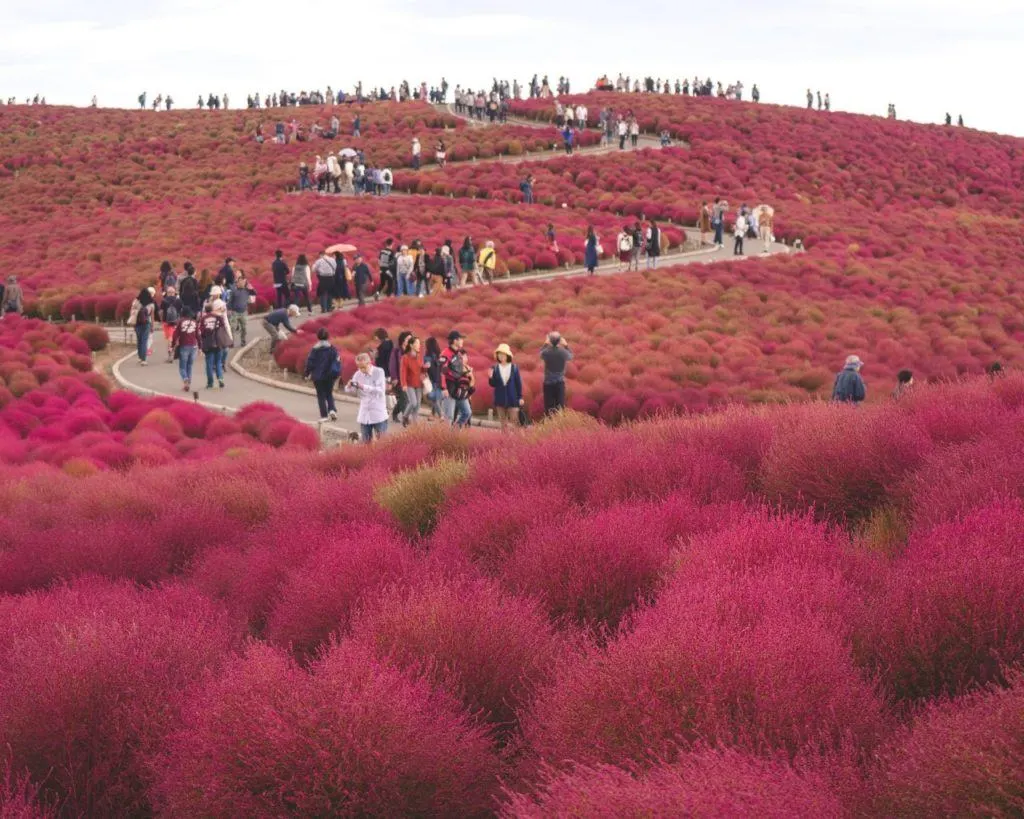
Kochia Viewing at Hitachi Seaside Park (near Tokyo)
The Hitachi Seaside Park is a park located to north of Tokyo which features manicured gardens, vast green spaces and spectacular fields of flowers, blooming at several different times throughout the year. The park also features a ferris wheel, water fountains, several places to set up a picnic and 28 other attractions for families and tourists.
The Hitachi Seaside Park is most well-known for the Nemophelia blooming during the Springtime. But my personal favourite time of year to visit the park is in Autumn, when the Kochia (Summer Cypress) plants turn from green to bright crimson red. This phenomenon is quite a spectacular sight, with 32,000 plants resembling a crimson carpet that blankets the hills overlooking the sea near the city of Hitachinaka.
The Kochia plants remain green for most of the year. Sometime in early October, they begin to change color and turn bright crimson red. This lasts for approximately 2-3 weeks before they change back to their usual color. If there is a particular bloom you are wishing to see, the Hitachi Seaside Park website posts daily updates on the progression of the many blooms and it’s possible to keep track of when the Kochia plants begin to change color.
This way you won’t turn up to the park disappointed! From Shinagawa Station, an 85 minute train journey on the JR Joban line (limited express) will take you to Katsuta Station. From Katsuta Station, buses to the park run approximately every 15 minutes. Entry to the park costs 450 Yen per adult and free for school aged children and under. The park is generally closed on Mondays.
by Amanda at Bucket List Seekers
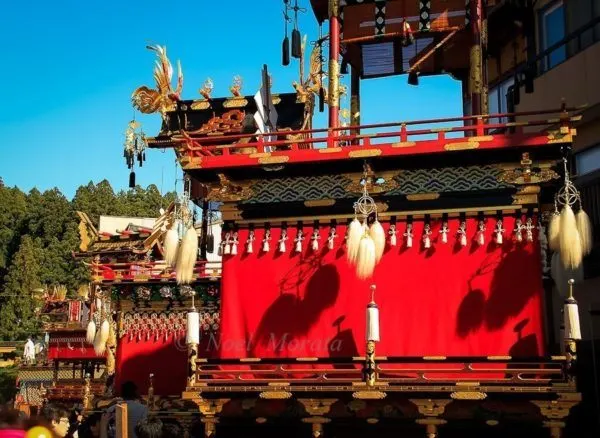
Takayama’s Fall Festival and Parade
Takayama is a spectacular place to visit at the foothills of the Japanese Alps. One of the most spectacular celebrations to attend is the Fall Harvest festival in the old parts of the city with stunning parades happening day and night time.
The city is alive with street fairs, food venues, fantastic shopping with streets lined with vendors sharing samples and local foods being prepared. The harvest festival is very popular with locals and people from around the country participating so it is really a lovely and colorful event that is fantastic to witness in person.
Takayama has a beautiful old city vibe with cobbled streets and old neighborhoods that harken to another time of Japan’s history and love of craft, art and good food. Definitely visit here on your way to seeing the Alpine country of Japan.
by Noel Morata
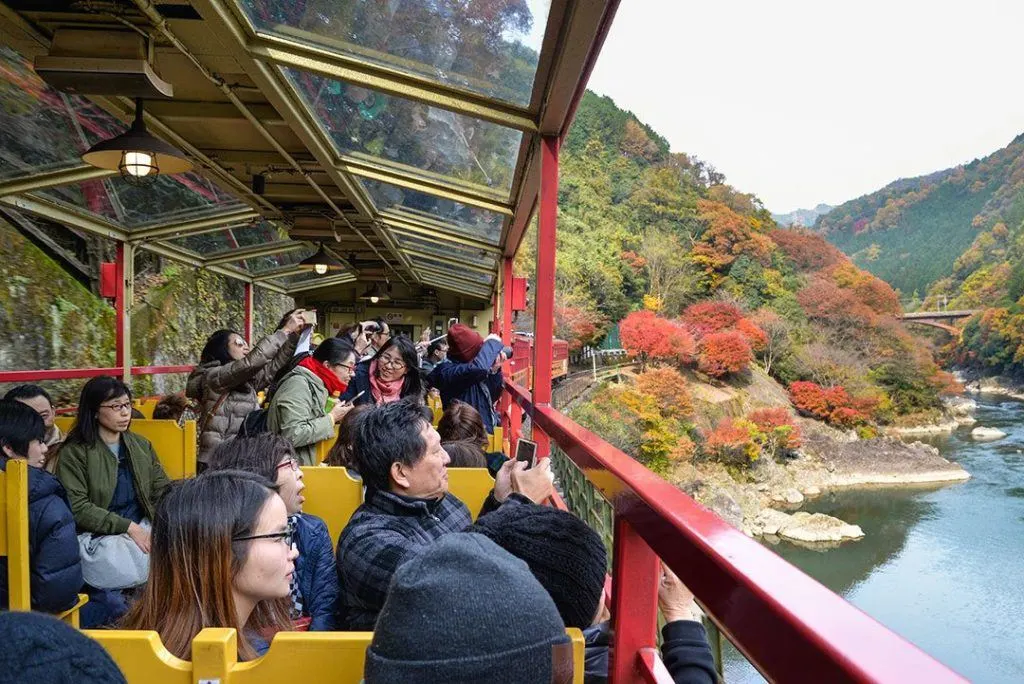
Ride the Sagano Train (near Kyoto)
Kyoto’s historic Sagano Train travels between Kameoka and Saga Station and passes through the beautiful forested Hozugawa Ravine. At the bottom of the ravine runs the Hozu River. The train ride takes about 25 minutes, traveling along at a reduced speed to give you a good amount time to take in the surrounding landscape.
The views are spectacular when you travel in the right season. In autumn the fall foliage spruces up the surrounding forest, and in spring there are the cherry blossoms. The train does get busy, and it’s important to pay attention to what seat you reserve, because the seat you’re in can make or break your view.
Make sure you get an even numbered seat on the right side of the car – that’s where the best views are. You can also ask to reserve a seat in the open rail car for the most unobstructed view, assuming the weather is good. A one way ticket is 620 yen, which you can purchase at Saga Station or at JR ticket offices. This is in my opinion one of the best things to see in Kyoto in autumn.
by Paul at Journey Compass
Winter in Japan
Depending on where you are in Japan during winter, the temperatures can range from mild to downright cold. There are plenty of places that you will never see snow and then there are places that the snowfall is extreme.
We used to live in the city of Misawa, which is pretty far north. There the annual snowfall is well over 100 inches per year. We would wake up almost every morning needing to clear our driveway, and it’s not even the most extreme snowfall in the country!
The main problem that winter in Japan brings is the lack of sunshine. Many of the days are overcast and gray, but the temperatures are not too bad. When there’s plenty of fresh, white snow and the thermometer hovers around the 30 degree mark, it makes for perfect skiing, sledding, snowshoeing, and just plain play in the snow weather.
We love it and look forward to it. Japan is one of the best places to ski! Throughout the middle to northern part of the country, there are plenty of fantastic ski areas, and our favorite is a small, lesser-known one called Hachimantai. It’s perfect for skiing with kids. And of course after a day on the slopes, you relax your tired muscles in a hot bath.
If you come to Japan during winter, make sure you try onsen, especially one with a rotenboro (outdoor tub). You will love it! Here are some more suggestions of things to do and places to go during wintertime:
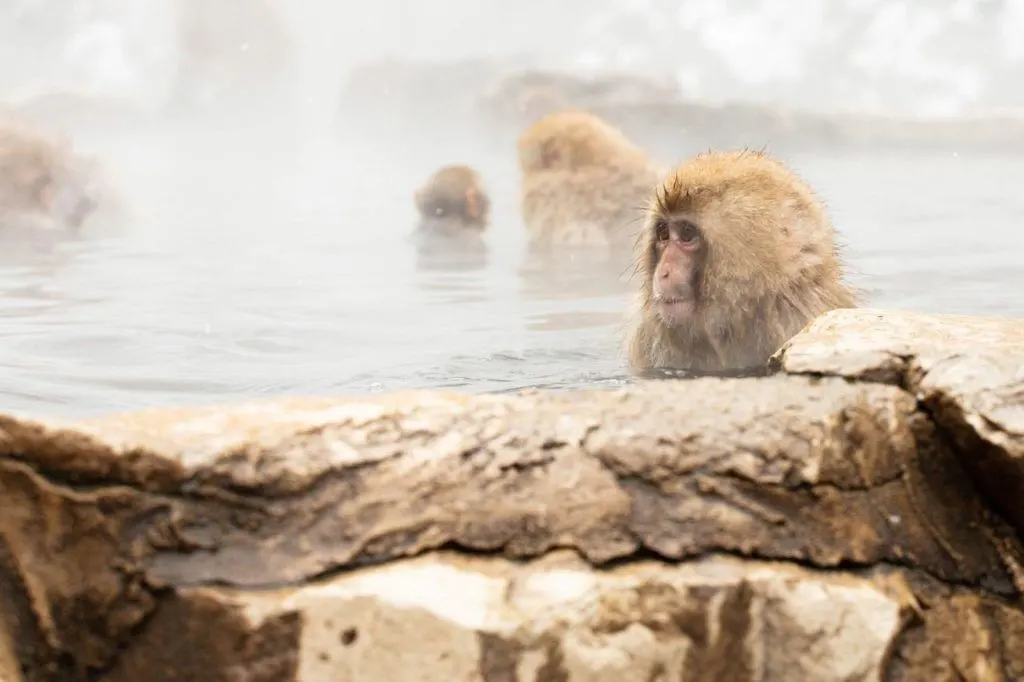
Snow Monkeys of Jigokudani (near Nagano)
One of the most famous things to do in winter is to visit the snow monkeys. It’s on everyone’s list, and by golly it should be. Jim and I have been twice…so far. I could go again and again. Yes, it’s true that you can see the monkeys all year round, but there’s something special about seeing them romp in the snow or have steam coming up from the onsen they love to lounge in.
It can be a bit difficult to find the snow monkey park, unless you take one of many day tours. Tours leave from all the ski towns, so it’s a great way to take a break from the slopes. If you are going on your own, it’s a bit trickier. Once you’ve parked, one of the best parts of the visit is the hike in. Walking on the path through the majestic cedars that the monkeys love, with snow weighing down the branches is magical! Both times we’ve gone we’ve seen monkeys on the path, so that was a bonus.
Once you are in the park, and you pay the fee, everyone hangs out around the hot bath onsen where there is always three or four monkeys relaxing. If the snow is falling while you are there, it’s that much better. Even though you will probably be with a small crowd, it’s still possible to get good photos and enjoy your time there.
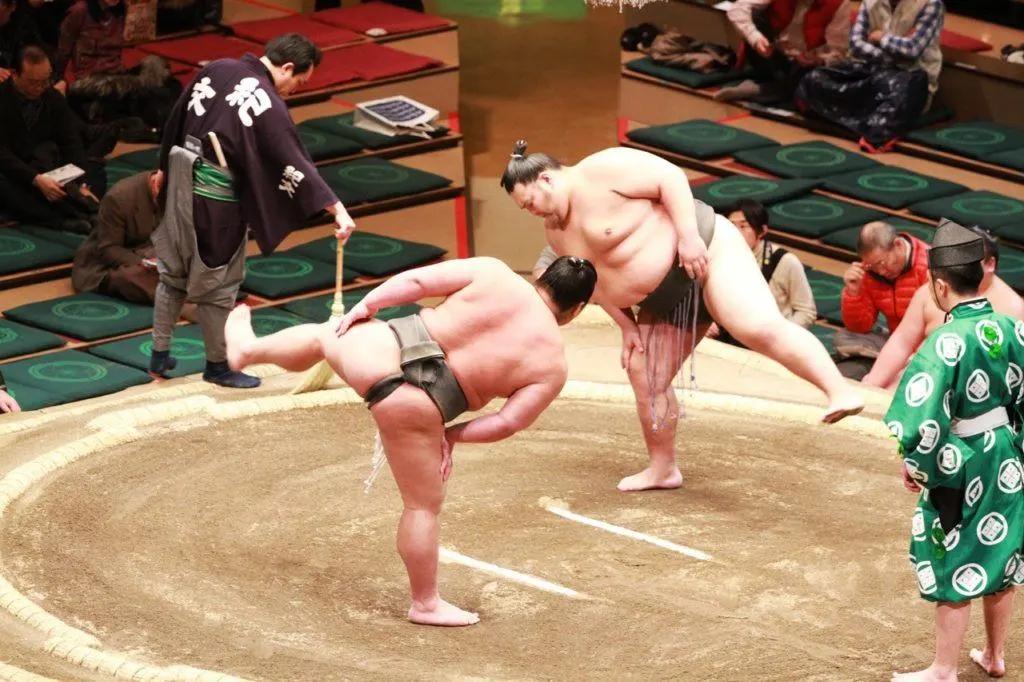
Attend a Sumo Wrestling Tournament in Tokyo
Sumo, the iconic Japanese sport is a must-see if you can on your trip to Japan. Every January, there is a sumo tournament in Tokyo. As you enter you notice that the center of the auditorium is a shinto shrine.
Sumo is a sacred act, and the ground must be purified in order to have a match. This is done prior to each bout. Even though the tournament doors open as early as 10:00 am, the real action doesn’t get going until about 2:00 pm when the big name sumo stars battle it out. Before that it’s just the young kids and lower level wrestlers.
While you are there, don’t forget to go downstairs, visit the sumo museum, and grab a bento box full of great food to munch on.
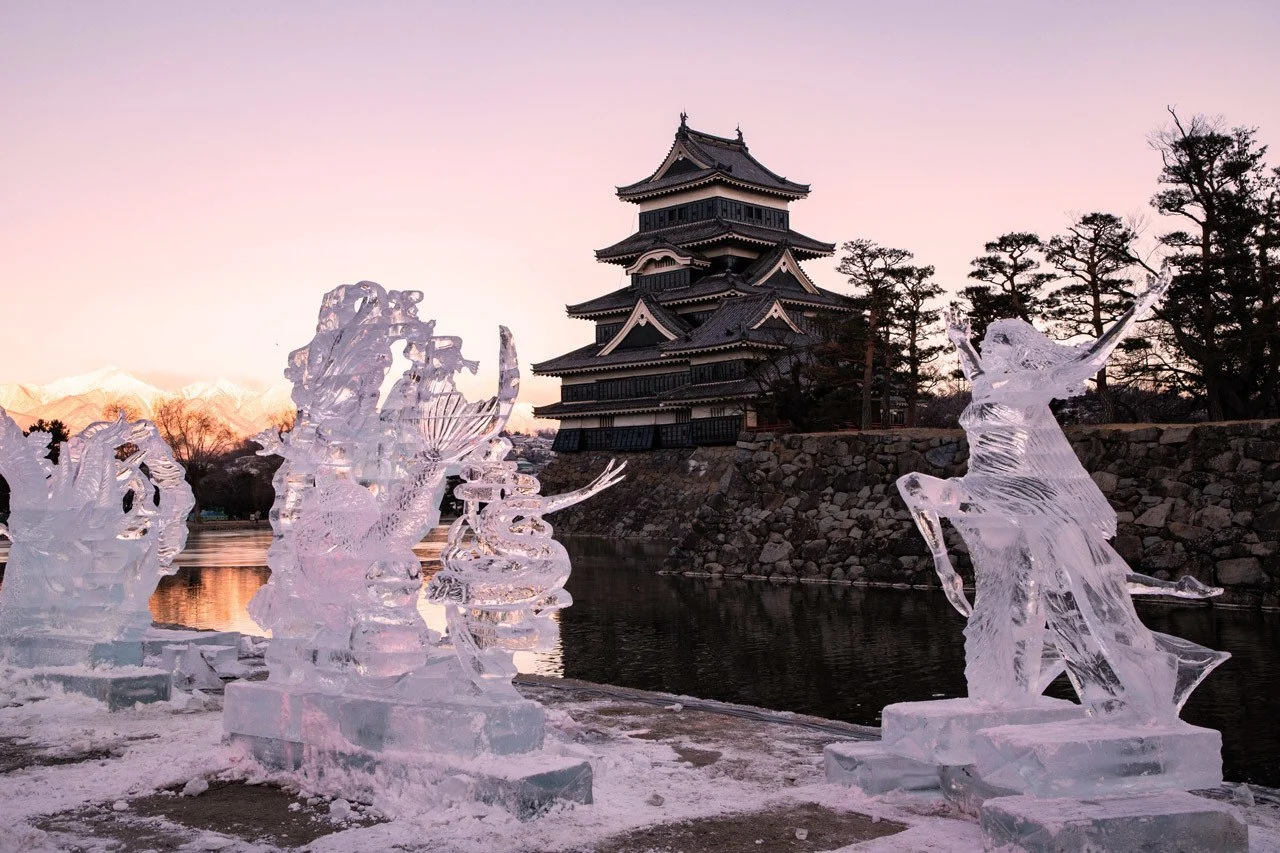
Matsumoto Ice Sculpture Festival
If you happen to be in Matsumoto during their annual ice sculpture festival, make sure you go. It will be held the last weekend in January in 2024. Artists come from all over the world to stay up all one night each year to carve what they hope to be a winning piece. It’s cold, but it’s amazing to watch the sculptures emerge from the ice blocks.
There are plenty of things to do in Matsumoto in addition to the ice sculpture festival to keep you warm and having fun. It’s a great way to spend a winter weekend!
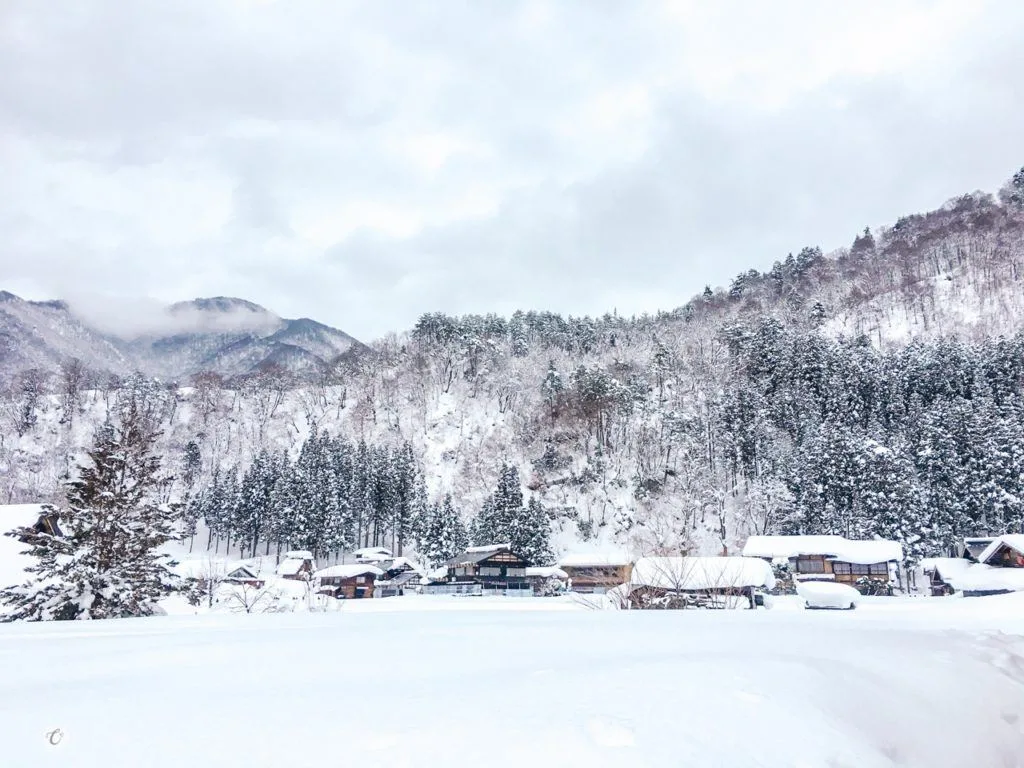
Shirakawago Winter Light-up Festival
Shirakawago is a historic gassho village in the Hokuriku region of Japan. This small town is a living museum with residents still living inside the 300-year-old Japanese farmhouses in a UNESCO heritage site. Visiting this quiet farm village is a unique cultural experience any time of the year; however, winter is the most popular season.
The traditional Japanese farmhouses called “gassho-zukuri” feature a thatched roof. When it snows heavily, the house covered in snow resembles the gingerbread house from a winter wonderland. It is quite the scene to witness. At first sight, it’s nothing like Japan, and you will be wondering whether you are in Japan or Swiss. But as you go into the house museums, it’s as Japanese as it gets with tatami-floor rooms, sliding doors, and Japanese charcoal fire. During the snow season in January and February, this fairytale village tucked in the Japanese Alps hosts its annual Shirakawago Winter Light-up Festival.
This is when the entire town of Shirakawago is illuminated at dusk. The view of illuminated gassho houses from the observation deck is iconic and the perfect reason to draw crowds to Shirakawago. If you are interested in attending the festival, it’s crucial that you plan well in advance. Shirakawago is a tiny town tucked in the mountainous region that is not easy to access from the major cities in Japan, especially during the heavy snow. And to protect the UNESCO heritage site, Shirakawago festival is open to the limited number of people each day.
by Chloe from Chloe’s Travelogue
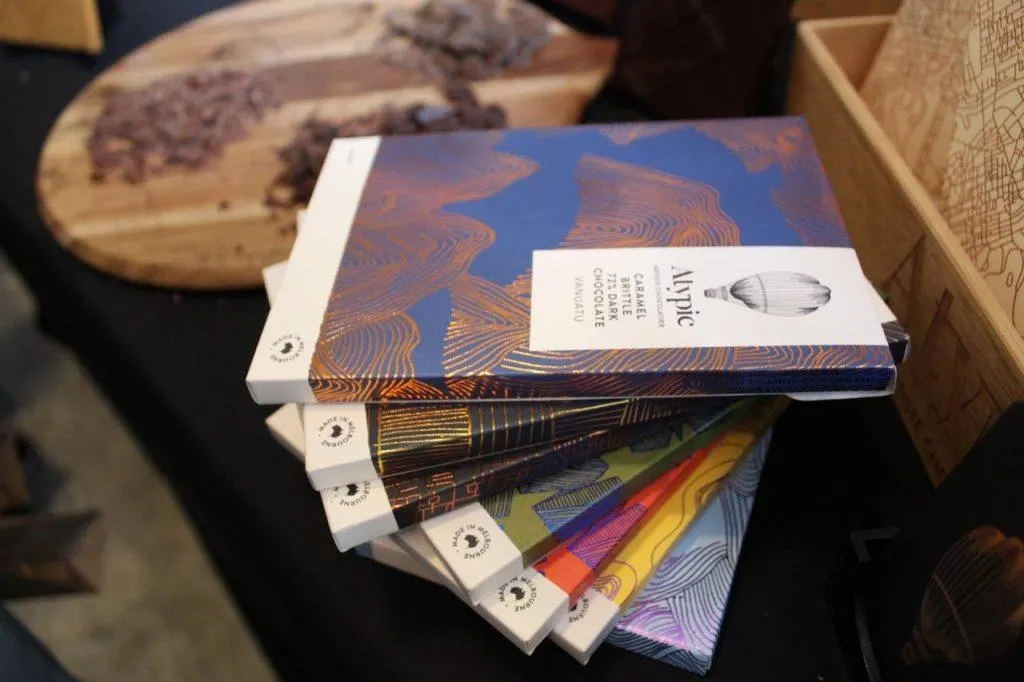
The Craft Chocolate Market In Tokyo
Visiting Japan during the wintertime is typically a hard sell; outside of the southern islands of Okinawa, Japan gets cold, like, feel it in your bones cold. In most of Europe and North America, this means you stay inside in your pajamas and enjoy a cup of hot cocoa. Luckily, in Japan it means the same thing. In fact, Japan is the unofficial chocolate capital of Asia, hosting massive chocolate festivals every winter.
If you only have a short time to visit Japan, you’ll probably spend most of your time in Tokyo and Osaka, the two largest tourist destinations in Japan. Both of these cities happen to have elaborate annual chocolate festivals. The largest of these is the Salon Du Chocolat, a French chocolate festival which has had versions throughout Japan for nearly two decades. But the most highly-anticipated Japanese chocolate festival is the Craft Chocolate Market in Tokyo.
It’s a 2-day festival held in Western Tokyo; it’s so popular that you need to purchase entrance by the hour. The market is focused on showcasing the best fine chocolate makers from around the country as well as around the world, all available in one place for a limited time. It’s one of the most unique things to do in Japan, and along with the Salons Du Chocolat, it’s a must-do for any chocolate lover visiting Japan in the winter time.
by Max at Dame Cacao
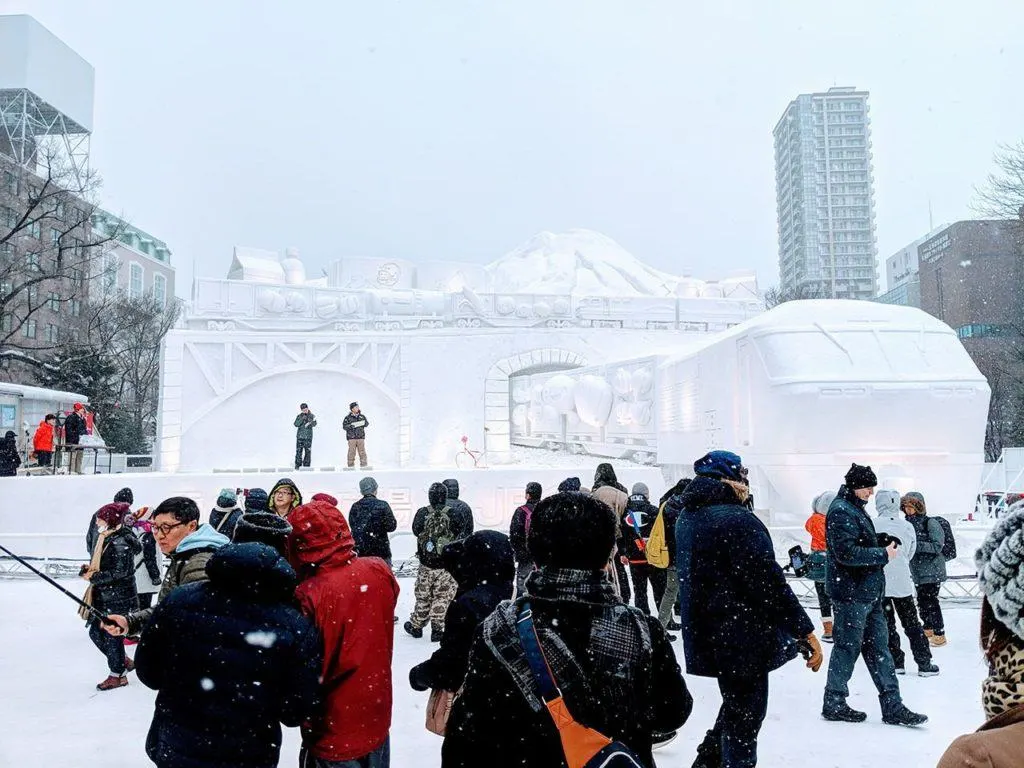
Sapporo Snow Festival
The Sapporo Snow Festival (さっぽろ雪まつり, Sapporo Yuki Matsuri) is usually held the first week of February and goes on for an entire week. All the main events happen on the east side of Odori park and the snow exhibits continue until the west end (it’s a BIG park!). Best of all, it’s completely free to see all the exhibits!
Events happen throughout the day and night! You may find yourself walking into musical performances, light shows, cosplay contests and dance exhibitions. Since it’s a festival, you’ll also be able to experience all types of local Hokkaido foods, drinks (including alcohol) and souvenirs.
Odori park contains all the snow exhibits, but if you take a 15-minute walk south to Hosuisusukino you’ll find the ice exhibits. During the day, the road is open to vehicles but by night they close it down for walking traffic. It’s recommended to see the ice sculptures at night since you can get close without being in traffic. An even better bonus, the ice sculptures are lit beautifully and enhance the lighting at night!
It’s very cold at night, but you can stay warm if you walk through the underground mall! It extends from Sapporo station to Hosuisusukino station. So if you’re planning a visit, try to stay along that street!
by Daniel at Blorg.org
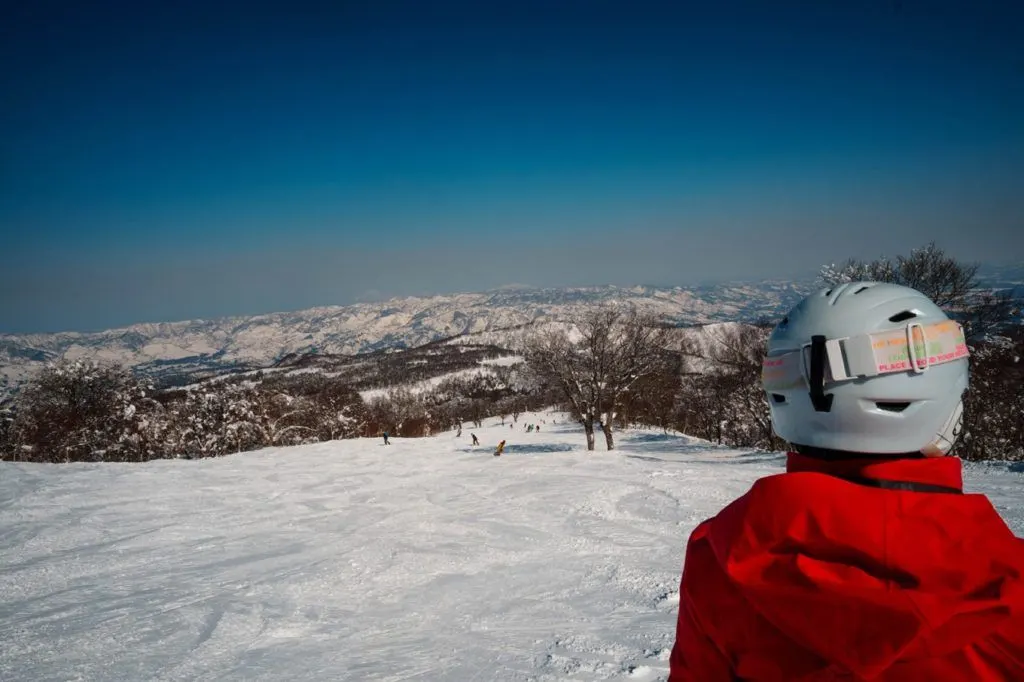
Skiing at Nozawa Onsen (near Nagano)
While Japan may not be the first destination that comes to mind for a winter trip, its world-class skiing at various resorts throughout the country should appeal to adventure travelers and culture seekers alike. The Japanese Alps on the main island reach heights of over 3100m and receive heaps of snow (aka Japow) that blows in from the Pacific Ocean. One amazing place in particular to ski is Nozawa Onsen for its varied terrain, insanely high average snowfalls, and delightful après scene.
The ski hill is named after the quaint, traditional mountain town where it resides which features over 13 different public onsens (hot springs), including one just for your feet! This insanely picturesque town receives so much snow that it’s not uncommon to see people shovelling piles of it off their roofs into the street below, so you need to watch out for heaps of snow falling down on you when you’re walking around!
Perhaps the best part about skiing in Japan, is after a day of slaying japow nothing beats sinking into an onsen to warm weary bones and soak away any aches and pains. Afterward, you can indulge in delicious sake, savory ramen, and traditional oyaki ( a regional specialty of stuffed buns steamed in hot spring water) for a unique après experience. Indeed, skiing at Nozawa Onsen combines fun and varied terrain and deep snow conditions with a side of culture not seen elsewhere.
by Thea at Zen Travellers
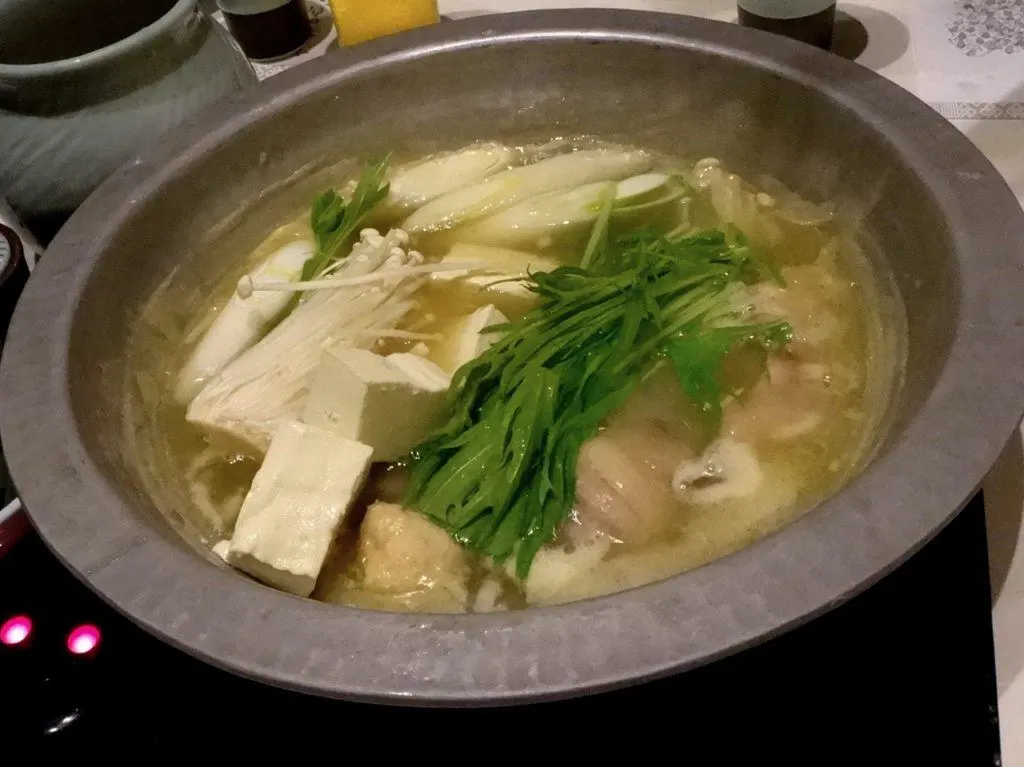
One Pot Meals to Warm Up during Japan’s Winter
One pot meals are the perfect winter comfort food – steaming hot, packed with nutrients and easy to prepare it’s no surprise that almost every region of Japan has one. In Tokyo it’s oden. This simple ready to eat stew is sold everywhere from convenience store takeaways to specialist restaurants called odenya. It’s the ideal winter meal – a light and hot soy or dashi broth topped with your choice of root vegetables like daikon, tofu, fish cakes or sausages – it warms you up without weighing you down.
One of the most famous odenya in Japan is Otafuku in Asakusa, where you can try up to 30 different toppings, or take a food tour to Sunamachi Ginza, a tiny road famous for its street food, where a hearty cup of onsen is one of the stops.
Further south, in Fukuoka, your winter warmer is Mizutaki – less of a grab and go meal, more a sit down dinner. This local dish sees you sitting around a vat of bubbling soup broth into which you add all the parts of a chicken –meat, bones, heart, liver and anything else you fancy. Add vegetables like carrot and cabbage and some tofu and leave them to simmer for a few minutes – then, gently lift out the perfectly cooked meat and vegetables to eat with chopsticks.
The communal element of eating Mizutaki is all part of the experience – you share the warmth of the meal, and the warmth of being with friends. There are many Mizutaki shops in Fukuoka but one of the most recommended is Hanamidori who have a number of branches all over the city.
by Helen of Differentville
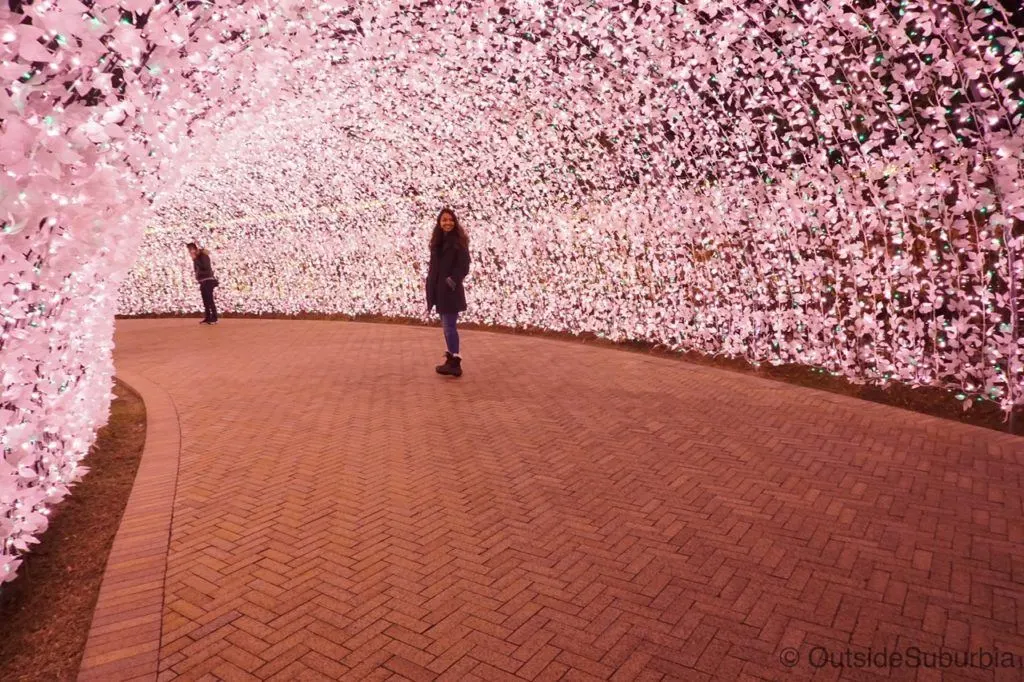
See the Amazing Winter Illuminations at the Nabana no Sato (near Nagoya)
Nabana no Sato is a theme park and botanical garden but it is also famous for is the winter light installation. People from all around the world come to enjoy the park and see these popular light installations. The park makes for a striking balance of nature and light.
Nabana no Sato is part of the Nagashima Resort and located in Nagashima Island near Kuwana city in Mie Prefecture. It was a 30 to 45 taxi ride away from Nagoya where we stayed during our trip to Japan. During Spring you can see fields of tulips and hydrangeas and irises in summer and carpets of cosmoses and dahlias in the fall. During winter instead of flowers, the park comes alive at night with thousands of lights.
Nabana no Sato features over 8 million LED lights to illuminate the different installations within a 210,000 square meter-area. The illuminated areas are divided into different parts, which include – a main area with a different theme every season, two Tunnels of Lights about 100m long illuminated by flower-shaped LED lights, and a river of lights with illuminated trees on either side.
When we visited last winter, our favorite was seeing a mini version of Mt Fuji illuminated by lights in the main area. Don’t miss the giant green house known as Begonia garden. It has a large display of potted Begonia plants throughout the year. There is a separate charge for visiting the Begonia Garden.
by Priya at Outside Suburbia
Conclusion – When is the Best Time to Visit Japan?
Japan is truly a country with four amazing seasons in which to travel. From New Year’s celebrations to the end of the year and the many spectacular winter light up activities, there is something for everyone, every season, every month! You can’t go wrong traveling to Japan at any time of the year whether you love sunbathing or skiing, kicking back with a fire and some hot food or slurping up some ice cream in a variety of flavors, Japan has it all!
Author Bio: Corinne Vail is a travel photographer, food lover, and a perpetual traveler who has been travel writing for over 14 years. For many years she lived overseas in Germany, Japan, Turkey, South Korea, and the Netherlands teaching the children of the US. military. She’s visited over 90 countries, and she’s not stopping anytime soon.
If You Enjoyed 4 Seasons, Check Out These Articles
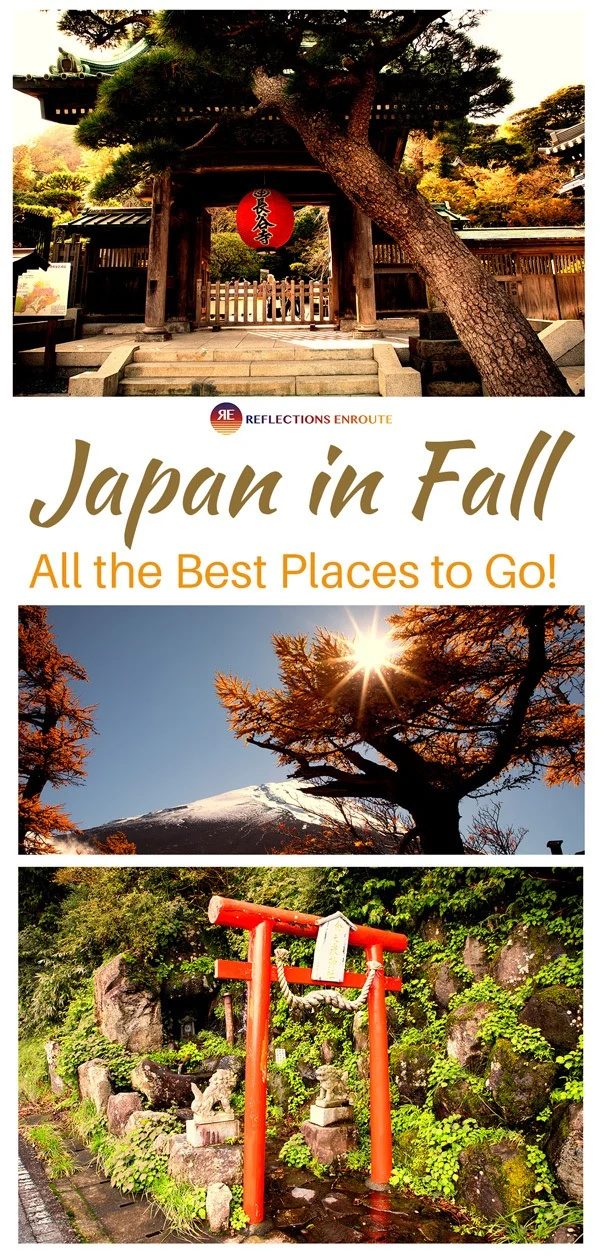
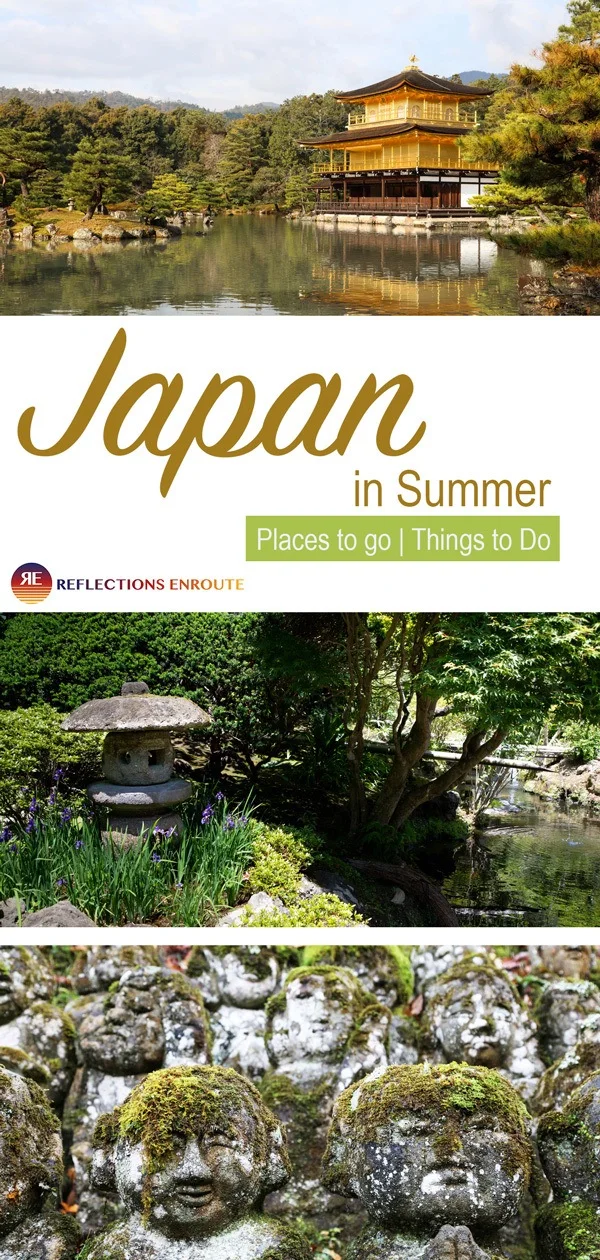
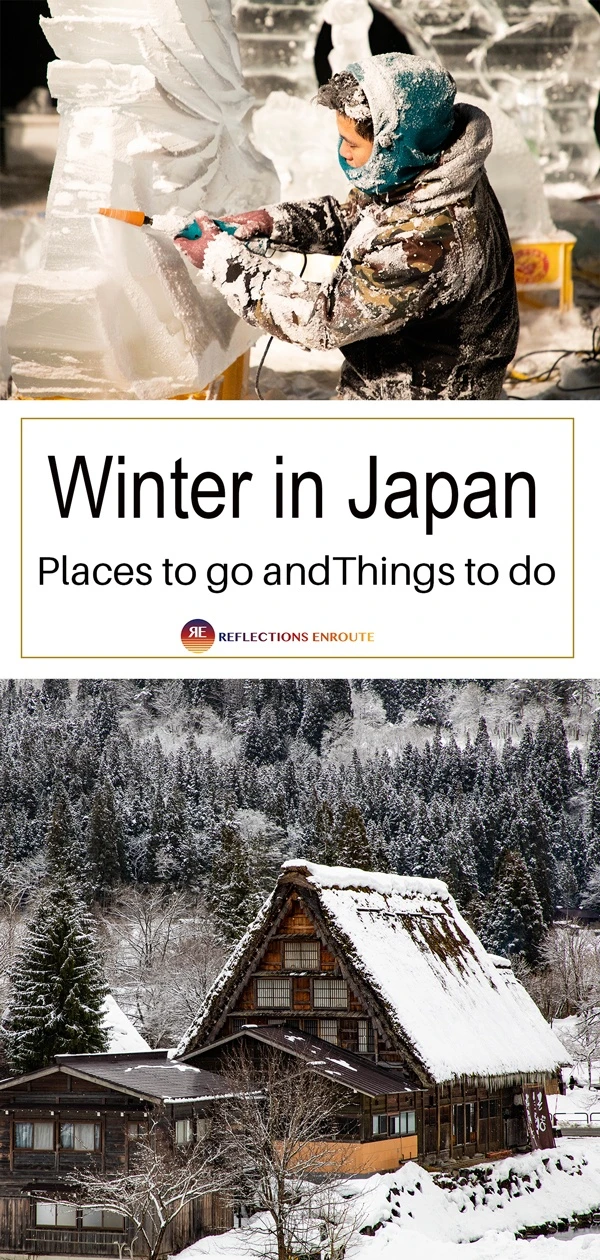

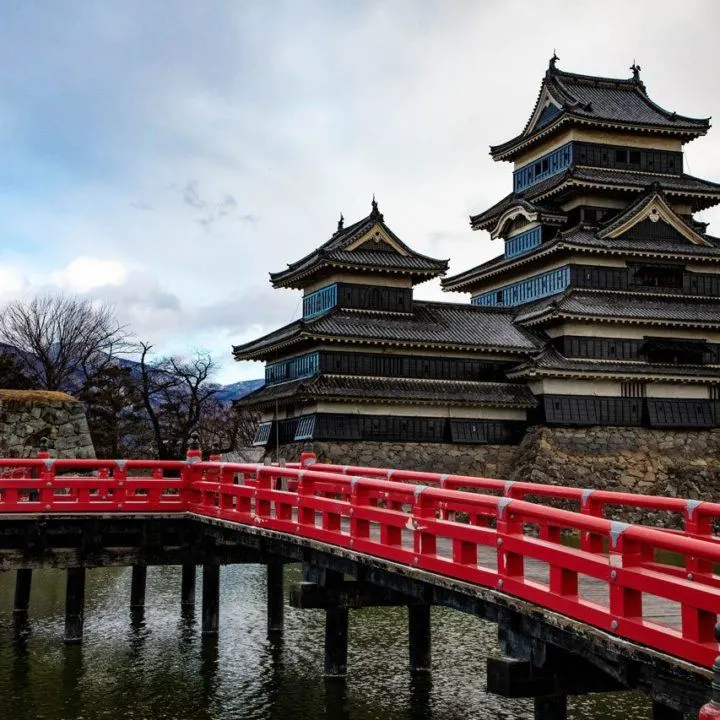
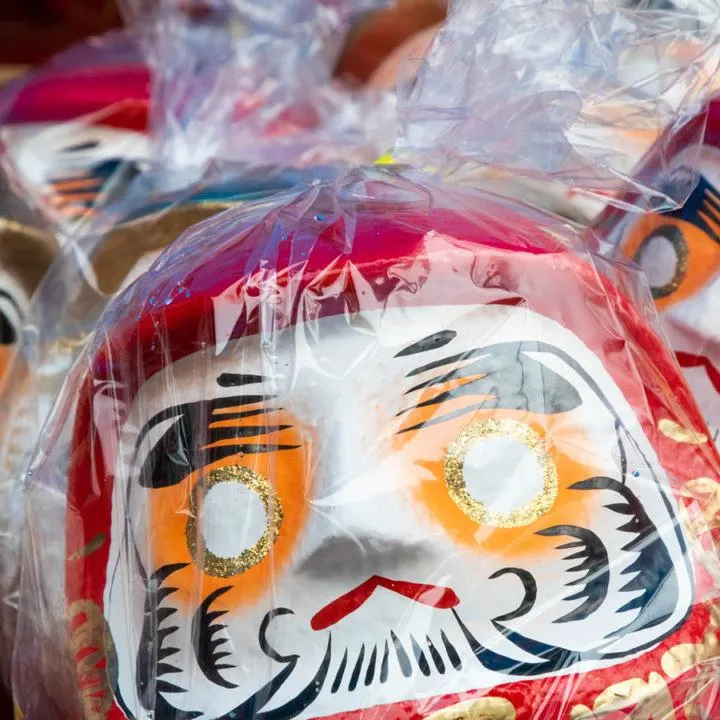
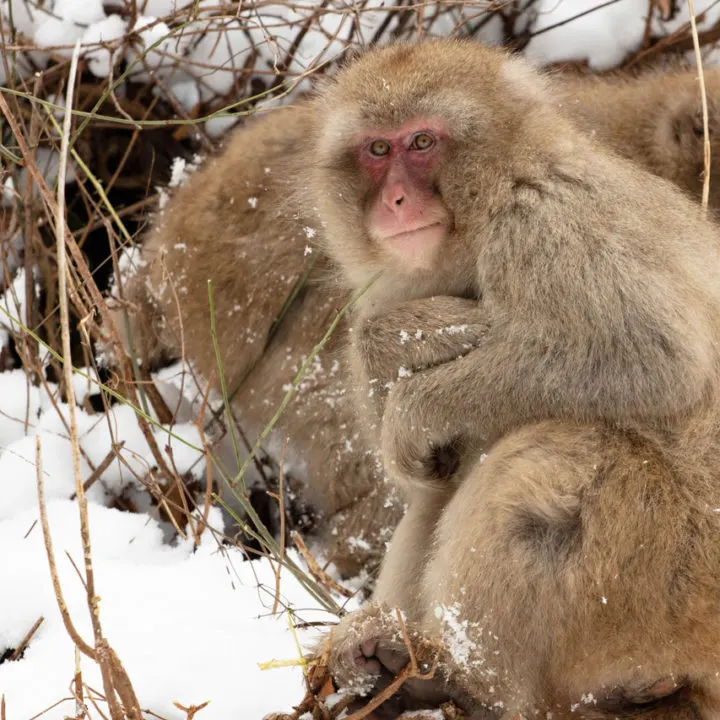
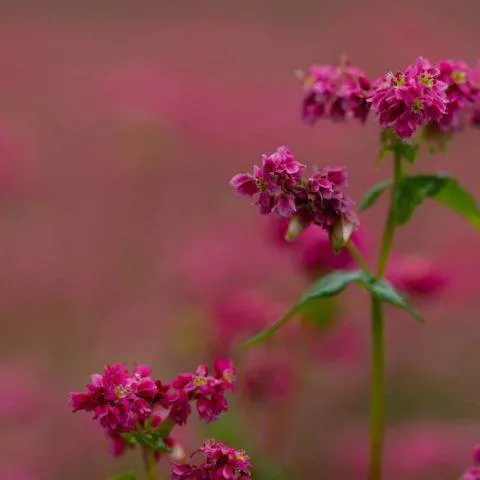
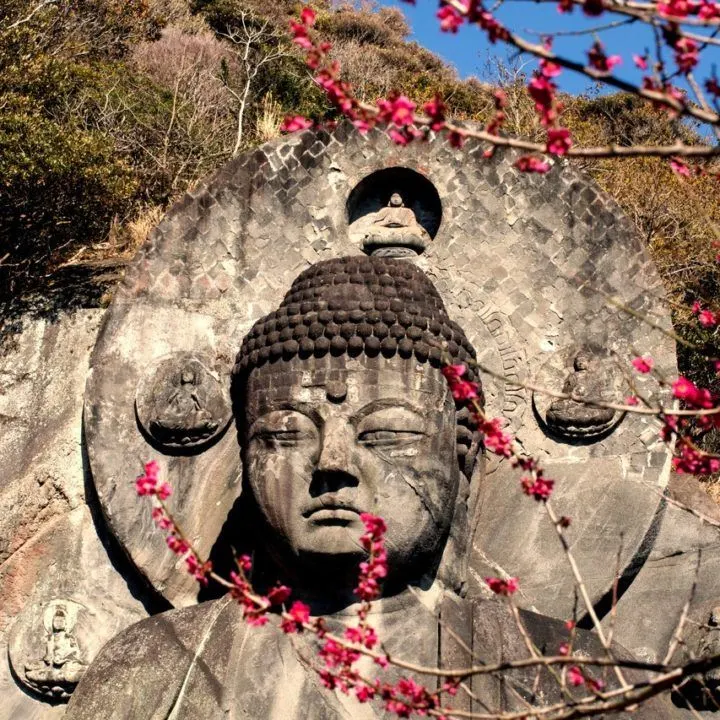
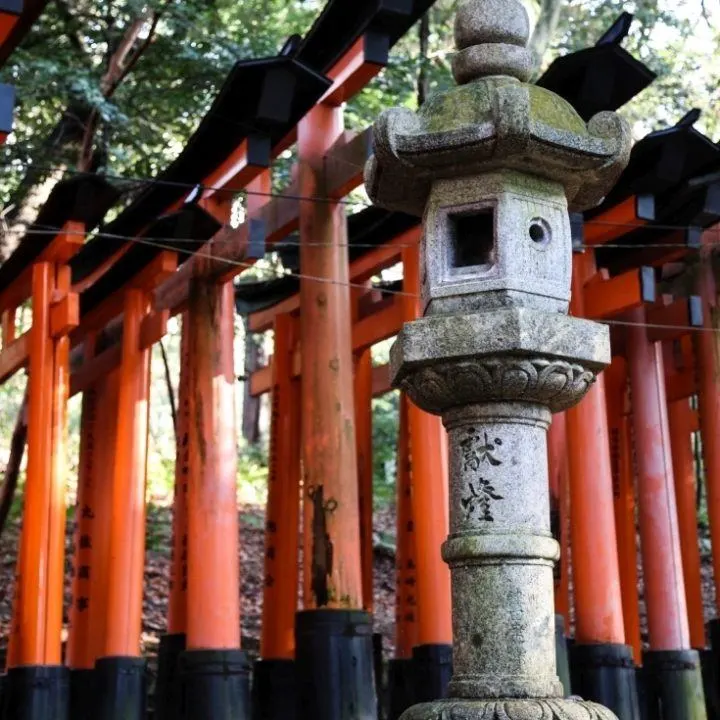
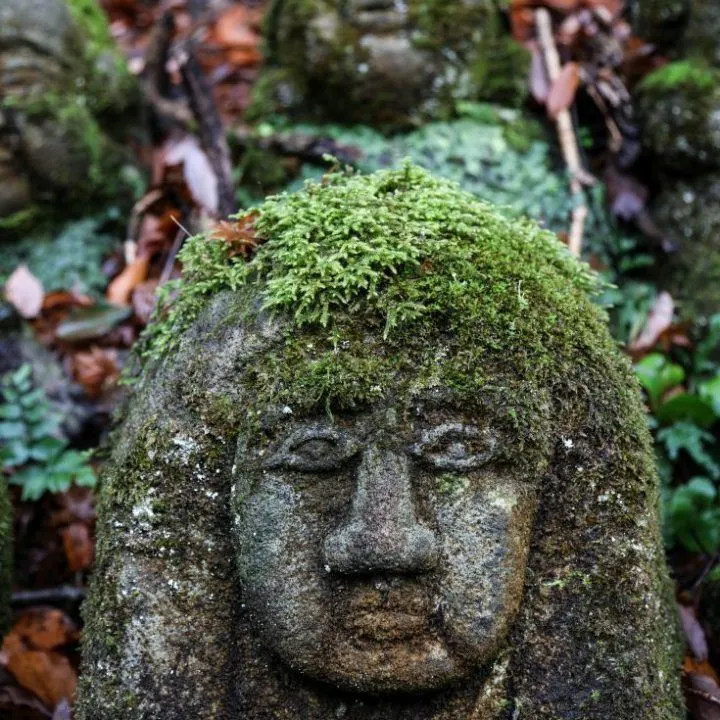
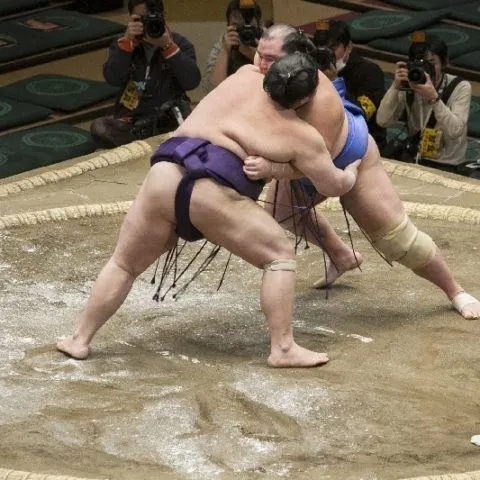
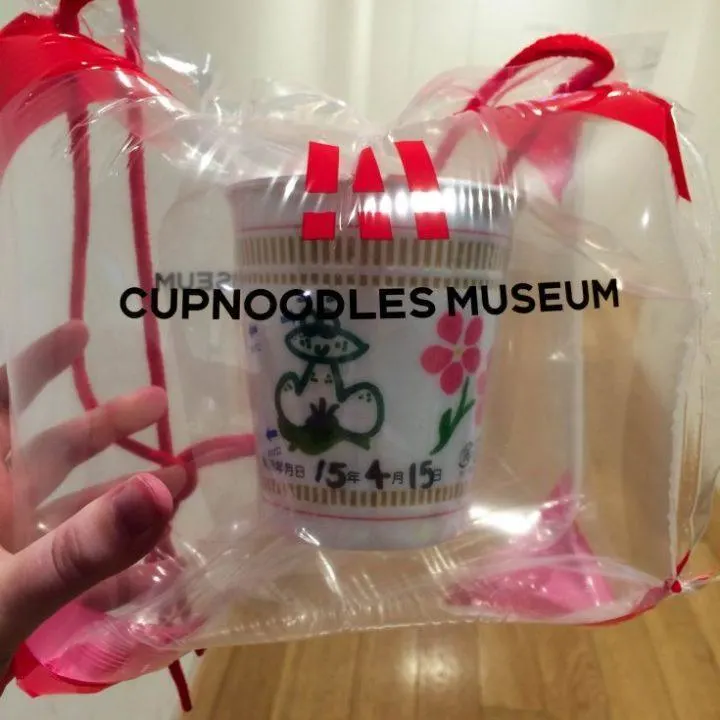

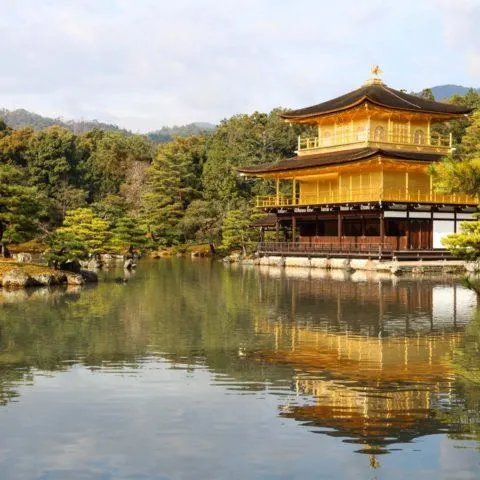
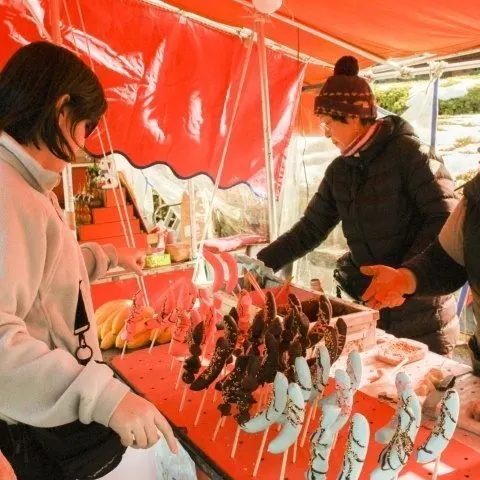
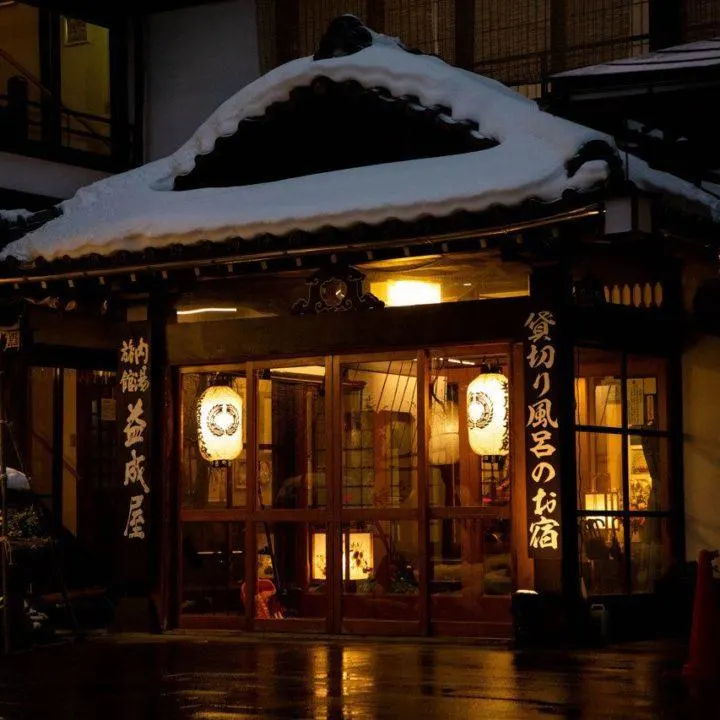
Eileen V. Fitzpatrick
Monday 10th of June 2019
P.S. Spring would be my favorite time, although I would go any time I could.
Corinne Vail
Monday 10th of June 2019
You are welcome anytime!
Eileen V Fitzpatrick
Monday 10th of June 2019
Hi Jim and Corky, this was great, most informative and enticing. Also, enjoyed all the photos and comments from other bloggers.